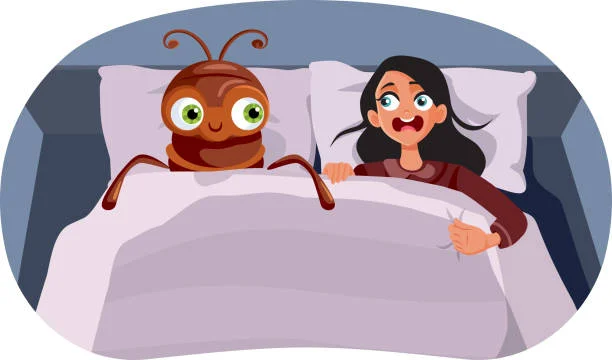If you’ve ever dealt with a bed bug issue, you know that these pests are not just irritating—they’re elusive, persistent, and difficult to eliminate. Many homeowners, driven by urgency and discomfort, turn to store-bought sprays, powders, or home remedies with the hope of resolving the issue on their own.
But here’s the challenge: bed bugs don’t behave like typical household pests. Their habits are more strategic, their biology is more resilient, and their presence is more invasive than most people assume. It’s not that DIY methods never work—it’s that they often fail to address the complete problem, allowing infestations to linger and even spread further.
To truly understand why do-it-yourself approaches fall short, it’s important to look closely at the biology, behavior, and hiding patterns of bed bugs.
Looking for more? This related post adds even more value to your read.
Not All Infestations Are Visible
The biggest misconception about bed bugs is that you’ll know when you have them. That’s not always true. These pests are masters of hiding—inside seams of mattresses, behind electrical outlets, in curtain folds, under floorboards, and inside picture frames. They avoid light, stay close to their host, and emerge mainly at night.
Because of their size and behavior, early infestations often go unnoticed. By the time someone sees an actual bug or blood spot on bedding, the colony may have grown significantly.
DIY treatments usually focus on what’s visible—spraying the mattress, cleaning the sheets, vacuuming the bedframe. But that’s only the surface. If even a few eggs or nymphs survive, the cycle continues.
Bed Bugs Are Not Just in Beds
Despite the name, bed bugs are not limited to beds. While mattresses and box springs are common hotspots, these insects will expand into surrounding furniture, rugs, baseboards, and even adjacent rooms as the infestation grows.
That’s where many DIY efforts fall short. People focus on the bed and miss the larger infestation ecosystem. Applying treatment only in one location can push the pests deeper into other areas of the home.
A proper inspection, something often overlooked in home treatments, is essential to identify all affected zones. Without that full picture, treatments are incomplete—and ineffective in the long run.
Chemical Resistance Is Real
Over time, bed bugs have developed resistance to many common insecticides. This includes the very chemicals used in over-the-counter sprays and foggers. What this means is that even direct contact with a chemical doesn’t guarantee death. Some bed bugs will survive, reproduce, and pass on that resistance to future generations.
In fact, studies have shown that many DIY products only kill a portion of the population, often the more vulnerable bugs, while the hardier ones survive. This gives a false sense of success—and a setup for resurgence.
Professionally applied treatments often rely on integrated pest management strategies, combining targeted chemical approaches with non-chemical methods to disrupt every stage of the life cycle. DIY sprays rarely offer this level of sophistication.
Temperature-Based Methods Are Hard to Control
Another popular DIY approach involves heat—raising room temperatures using space heaters or blow dryers in an effort to kill bed bugs. While bed bugs do die at sustained high temperatures (around 120°F), maintaining that temperature consistently across an entire room or apartment is difficult without specialized equipment.
Heated air rises, cools quickly at floor level, and often doesn’t penetrate the tight spaces where bed bugs hide. Improper heating can even lead to pest migration, spreading the infestation to previously unaffected areas.
The same goes for freezing. Placing infested items in the freezer only works under specific conditions for a long enough time. Quick freezes or inconsistent temperatures won’t do the job, and items can be damaged in the process.
Professional bed bug exterminators in Colts Neck use industrial-grade thermal solutions when necessary—something not easily replicated with household tools.
Missed Eggs = Recurring Problem
Bed bug eggs are sticky, tiny, and nearly impossible to spot without magnification. They’re also highly resilient. Even if adult bugs are successfully eliminated, eggs can hatch up to ten days later, restarting the infestation cycle.
Many DIY methods fail to account for this. One-time treatments may kill adult bugs but leave behind viable eggs that go unnoticed. Without a follow-up plan, the infestation rebounds, leading to more frustration, bites, and cleaning.
That’s why effective bed bug control involves scheduled re-inspections and retreatments where necessary. It’s not about one application—it’s about breaking the entire reproductive cycle.
Cross-Contamination Risks
One overlooked danger of DIY methods is the risk of spreading bed bugs unintentionally. When homeowners move furniture, change linens, or transport items from room to room during cleaning, they may actually help bed bugs spread to new locations.
Vacuuming without proper disposal, using shared laundry facilities, or failing to isolate infested items can all contribute to wider infestations.
Professionals know how to contain a site, treat infested items safely, and prevent cross-contamination. That level of control is hard to maintain without training and experience.
Psychological Stress and Misdiagnosis
Living with a bed bug infestation often causes stress, sleep disruption, and anxiety. The fear of being bitten, the constant checking, and the uncertainty about whether the issue is truly resolved can wear down even the most patient homeowners.
In some cases, bites may be mistaken for those from other insects, or new bumps may appear long after treatment due to allergic reactions—not active bugs. This leads to confusion, repeated DIY attempts, and emotional fatigue.
A calm, objective assessment from trained technicians removes the guesswork. Agile Pest Control, for example, emphasizes proper identification before any treatment begins—something critical when symptoms don’t match expectations.
Prevention Requires Education
The final layer of control comes from understanding how bed bugs spread in the first place. Most infestations start when bugs hitch a ride—on luggage, used furniture, or personal items from infested environments. Hotels, shared spaces, offices, and public transportation are all potential transfer points.
DIY methods often focus on reaction. But true prevention involves awareness. Where do bed bugs come from? How do they travel? What routines can reduce the risk of reintroduction?
Without answers to these questions, even a seemingly successful treatment may not be the end.
The Bottom Line: DIY Alone Is Rarely Enough
Bed bugs have evolved to survive in a range of conditions, hide exceptionally well, and resist standard treatments. While small infestations might respond to immediate, targeted action, most require more than just effort—they require strategy.
Homeowners shouldn’t feel discouraged if their efforts don’t work right away. The issue isn’t one of commitment—it’s one of complexity.
Agile Pest Control understands that every infestation is different, and that effective solutions must address biology, behavior, and the unique conditions of the home. The goal isn’t just to eliminate bugs today—it’s to prevent them from returning tomorrow.
Don’t miss our top pick – a featured post worth every second of your time.






